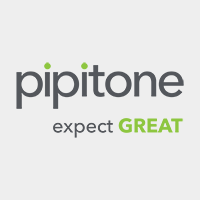
In today's over saturated media world, it’s becoming more difficult for companies to reach key stakeholders with their branding and product messaging. Trying to find impactful yet cost efficient media impressions that create measurable results is the Holy Grail.
In today’s hyper-fragmented media environment, there’s comfort in the tried-and-true. However, as we are reminded by Thoreau, “Things do not change; we change.” So, we might want to think a little differently to better connect with our stakeholders.
We live in a blended world where overlap between our work lives and home lives is the norm. Today’s professionals work at home and play at work and vice versa.
Today’s society is no longer a “work-on, home-off” world:
- 2 in 3 employees report working while on vacation1
- 42% respond to personal items during work hours2
- 48% regularly respond to work during home time2
- 25% report they regularly bring work home2
- 25% allow work to interrupt friends and family2
If our work and home life overlap, shouldn’t our media consumption also? Think work-life integration rather than work-life balance. Integration connotates a blend. Balance implies equality.
Thinking “integration” rather than “balance” allows us to engage our customers, whether they’re architects, contractors or owners, in non-B2B channels, whether they’re on-or-off the clock. By connecting with our audiences on channels they may engage with outside of work, rather than just via trade media, we can be more cost efficient—as little as $1 per engagement—without sacrificing relevance.
Success with this approach requires more than just programmatic buys. It’s also about understanding what message resonates with your audience based on their mindset on the channel in question. An architect checking the news during a child’s soccer game has a very different mindset than when using their weather app from a job site.
Aligning the product’s point-of-difference messaging with the audience mindset or “need for information” (low-involvement processing vs. high-involvement processing) increases engagement and intuitive affinity. It might require entertaining branded content for low involvement processing and more product information for high involvement processing engagement. Think right message-right time.
Applying dynamic creative sequencing throughout the marketing funnel will help move your audience from awareness to preference in building your lead nurturing databases. In the next post, we’ll explore turning engagement into a nurturing system – communicating valuable content over duration.
Sources
